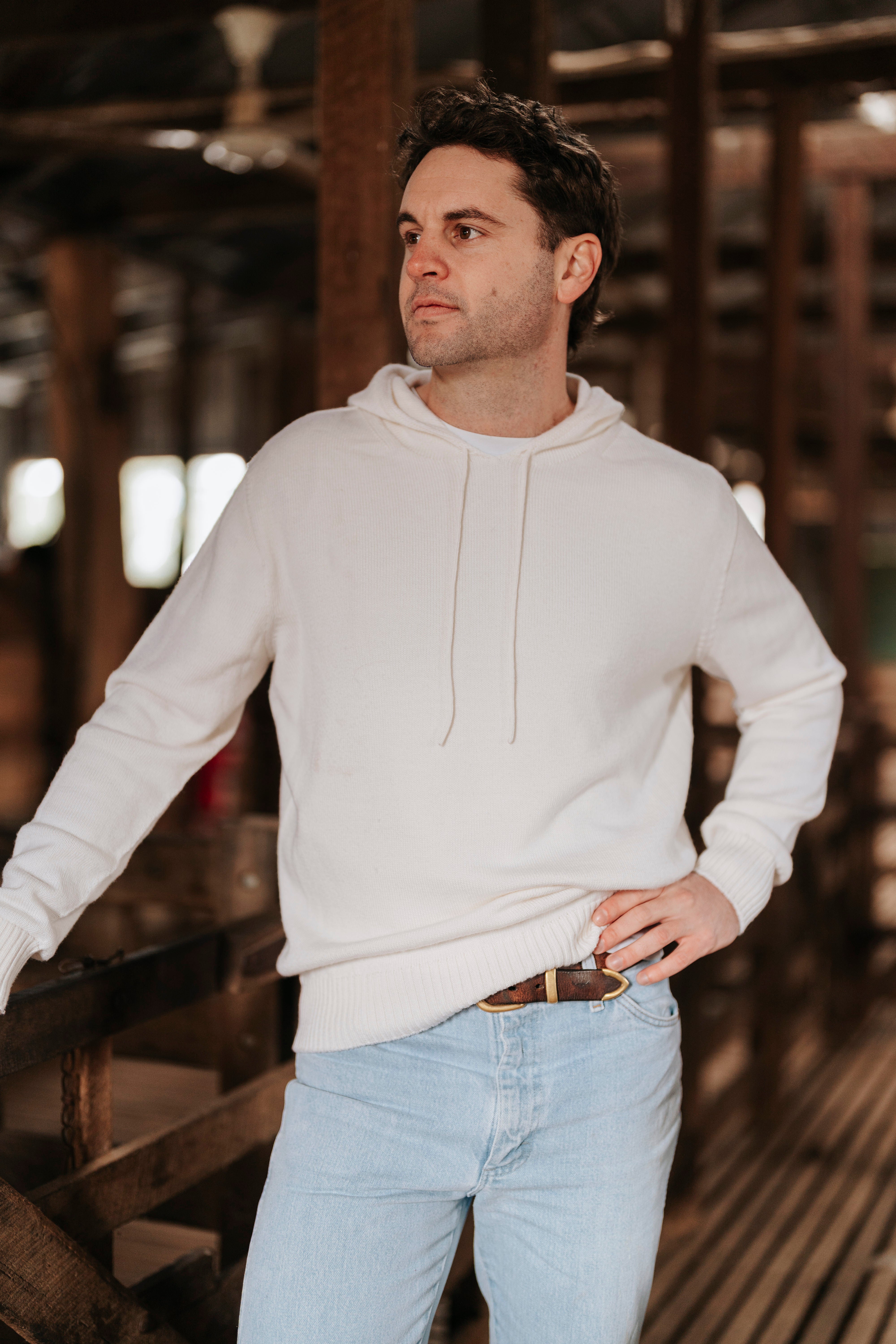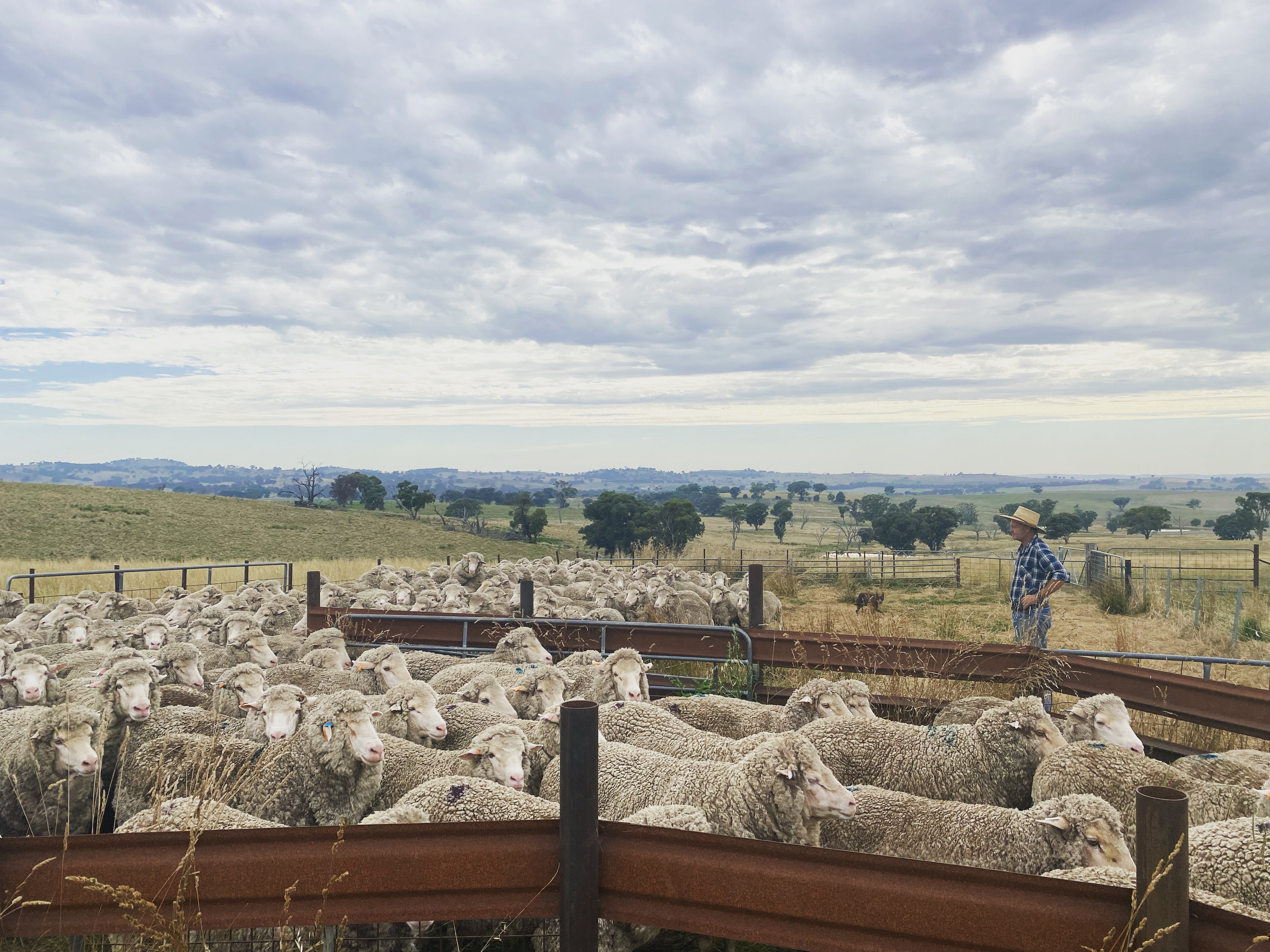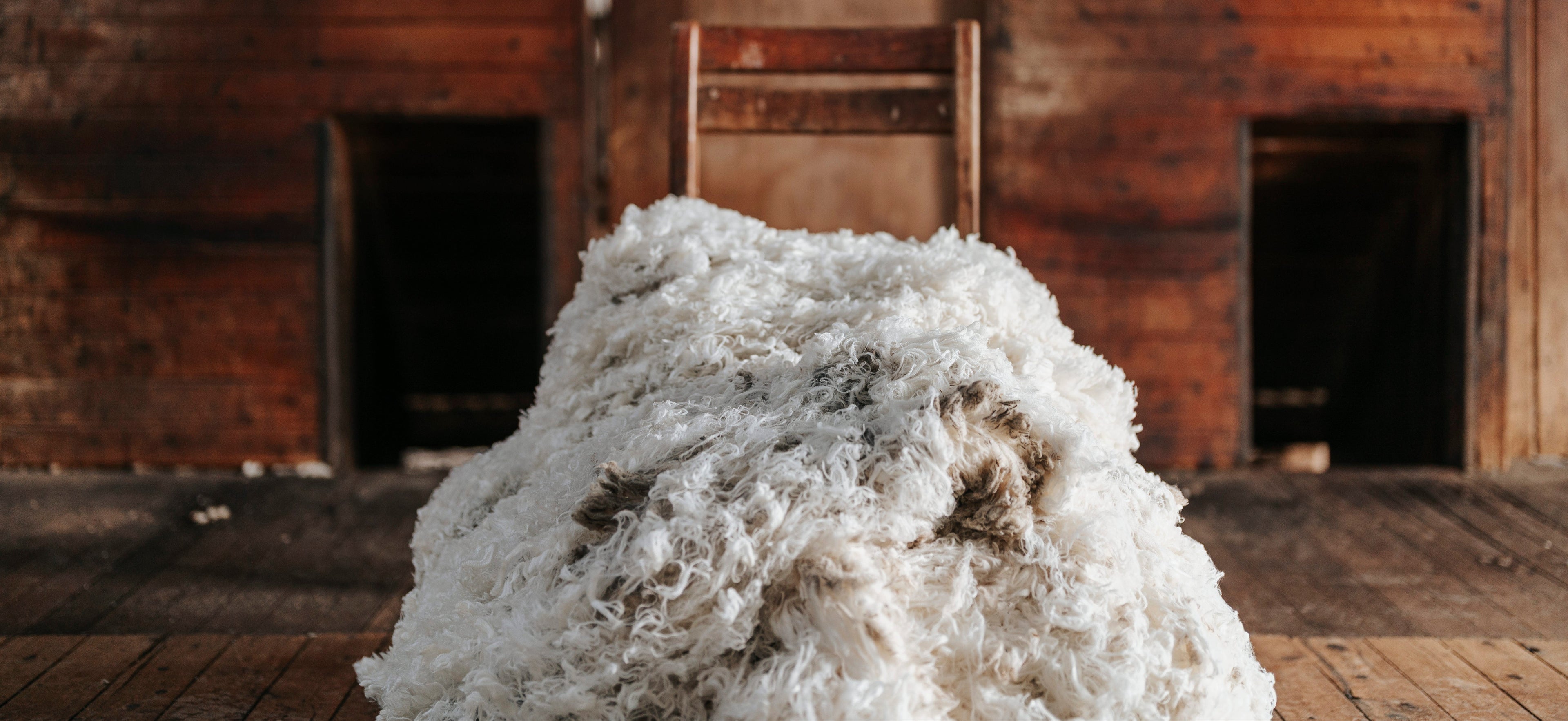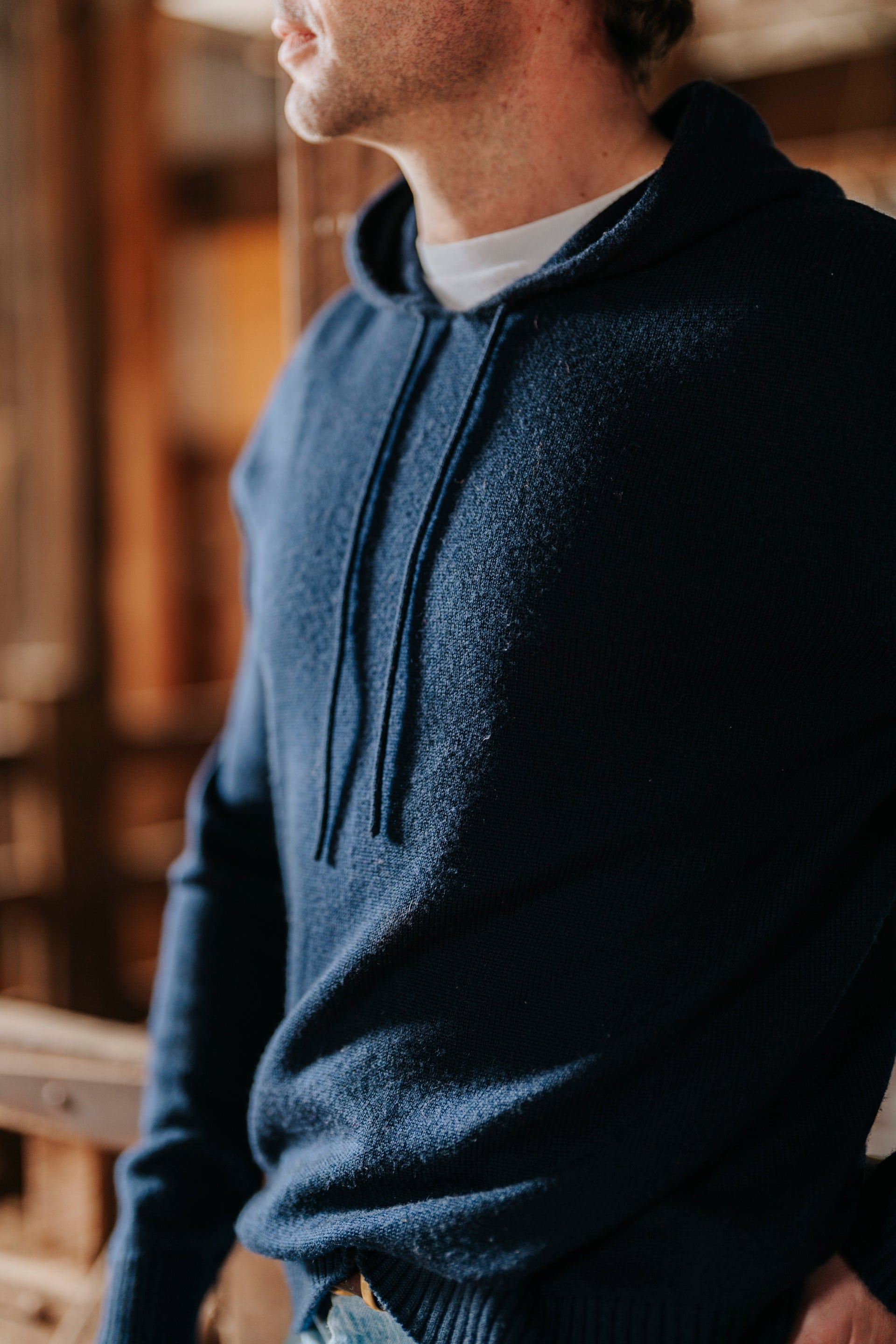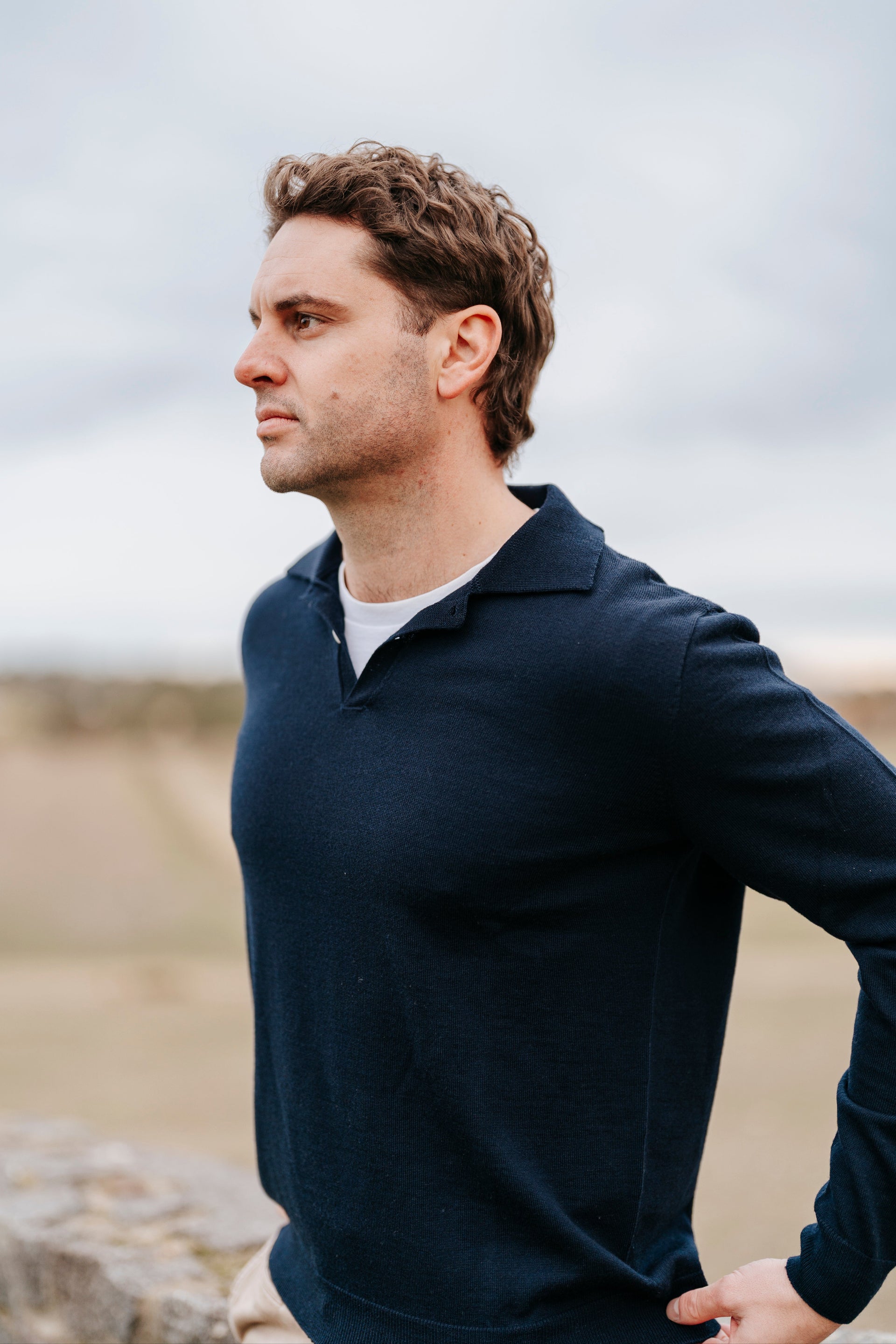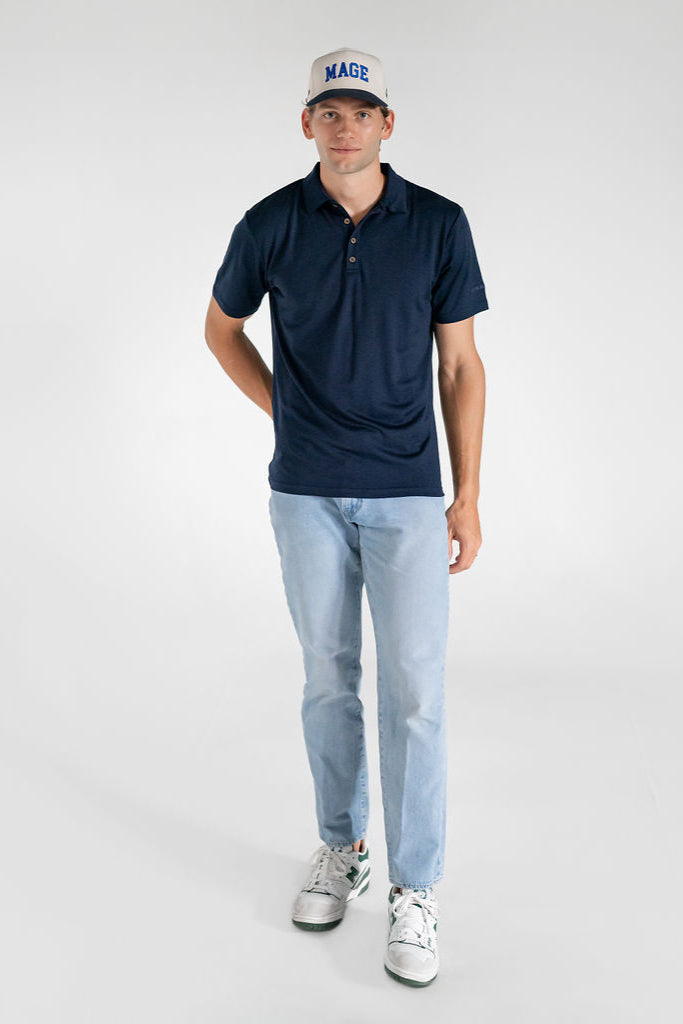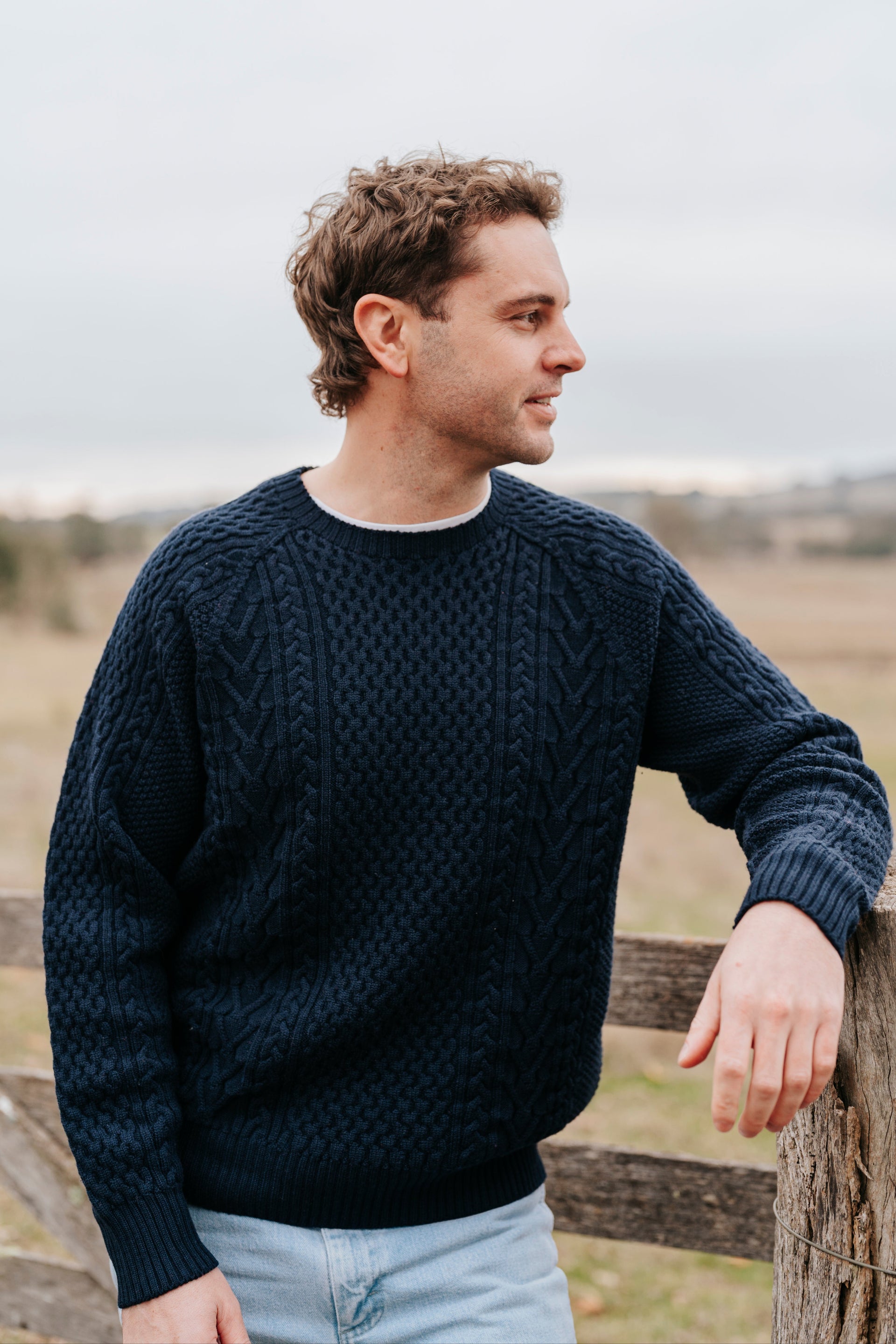A fiber from nature
Merino wool doesn’t start in a factory. It begins in nature—on the backs of one of the most remarkable animals in the world.
For centuries, Merino sheep have grazed the rugged hills, valleys, and plains of Australia, quietly producing a fiber so fine it changed the clothing industry forever.
At Sir W., we trace our roots back to the Merriman family farm in Boorowa, New South Wales, where Sir Walter Merriman established one of the world’s leading Merino studs. That connection to heritage and authenticity informs everything we make.
But before a Merino tee, polo, or sweater ends up in your wardrobe, the wool itself goes on a long journey—one that begins with careful breeding, natural growth, and sustainable stewardship of the land.
This is the story of how Merino wool is grown.
The Environment: Nature Shapes the Fiber
Merino sheep thrive in environments that would test most animals. From the dry, windswept plains of inland New South Wales to the chilly alpine slopes of Tasmania, Merino flocks endure sweltering summers and freezing winters.
The secret to their resilience is the fleece itself. Merino wool evolved to regulate temperature—keeping sheep warm in the cold and cool in the heat. This natural adaptation is exactly why Merino garments perform so well for people, too. When you slip on a Merino tee or sweater, you’re wearing the same technology nature perfected for survival.
Farmers play a critical role in this stage. Healthy land produces healthy sheep, and healthy sheep grow better wool. That’s why Merino producers carefully manage pasture rotation, soil health, and water use.
Growth: How the Fiber Forms
Wool fibers grow from follicles in the sheep’s skin, much like human hair. Each follicle produces a strand of wool, and over time, these strands grow into a dense fleece.
The growth is continuous. Unlike some animals that shed seasonally, Merino sheep never stop producing wool. That means they need to be shorn at least once a year for their own wellbeing. Without shearing, the fleece would become overgrown, heavy, and unhealthy for the sheep.
The remarkable part? The sheep themselves turn nothing more than grass, water, and fresh air into the world’s finest natural textile.
Shearing: Harvesting the Wool
Each spring, skilled shearers gently remove the fleece using electric clippers. Done properly, it’s quick, painless, and essential for the animal’s health. A single sheep produces between 4 and 8 kilograms of wool each year, depending on the breed line and growing conditions.
Shearing season is a highlight of the year—a time of tradition, community, and pride. The raw fleece at this stage is already impressive: soft, white, and crimped. But it’s only the beginning. Before it becomes a Sir W. sweater, it must be carefully sorted, graded, cleaned, and spun.
Wool Classing: Separating the Finest Fibers
After shearing, fleeces are laid out and assessed by professional wool classers. Fine Merino, with fibers under 20 microns, is used for luxury next-to-skin garments like tees and polos. Slightly stronger fibers might be reserved for outer layers like fisherman knits or blankets.
This meticulous sorting is one of the reasons Merino wool commands a higher price than synthetic alternatives. Quality control begins at the farm, long before spinning or knitting.
From Greasy Wool to Clean Fiber
Freshly shorn wool—known as “greasy wool”—still contains lanolin (natural sheep wax), sweat salts, and vegetable matter from the pasture. To prepare it for spinning, it undergoes scouring: a gentle washing process that removes impurities while preserving the natural structure of the fiber.
Lanolin, once removed, has uses of its own, from cosmetics to industrial lubricants. Nothing goes to waste. The clean fiber that remains is light, white, and ready for spinning into yarn.
Spinning and Dyeing: Transforming Wool into Yarn
The clean Merino fibers are carded, combed, and spun into yarns of varying thicknesses, depending on the intended garment. Fine yarns might be used for lightweight tees, while heavier yarns become sweaters.
At this stage, the wool can also be dyed. Merino takes on color beautifully, retaining vibrancy without losing softness.
Knitting, Weaving, and Making Garments
Finally, the yarn is transformed into fabric—either knitted or woven. At Sir W., we use 3D knitting technology for our sweaters, producing garments with zero waste. Shirts, polos, and tees are crafted from knitted jersey fabrics that combine softness with durability.
This is where the circle closes: a natural fiber, grown on a hillside, now exists as a garment ready for your everyday life.
Sustainability: A Renewable Resource
Each year, sheep grow a new fleece. Unlike synthetics, which are derived from petroleum, Merino is 100% natural, biodegradable, and recyclable. When you wear Merino wool, you’re choosing a fiber that returns to the earth rather than polluting it with plastic microfibers.
This cycle—grass to sheep, sheep to fleece, fleece to garment—has sustained communities for centuries.
The Journey from Sheep to Shirt
Merino wool isn’t grown in a lab or assembled in a factory. It’s cultivated by nature, refined by skilled farmers, and carried forward by generations of tradition. From the rugged resilience of the Merino sheep to the meticulous care of wool growers and classers, every step reflects patience and craft.
When you pull on a Sir W. Merino polo, tee, or sweater, you’re not just wearing clothing—you’re wearing the culmination of centuries of heritage, natural ingenuity, and sustainable growth.
